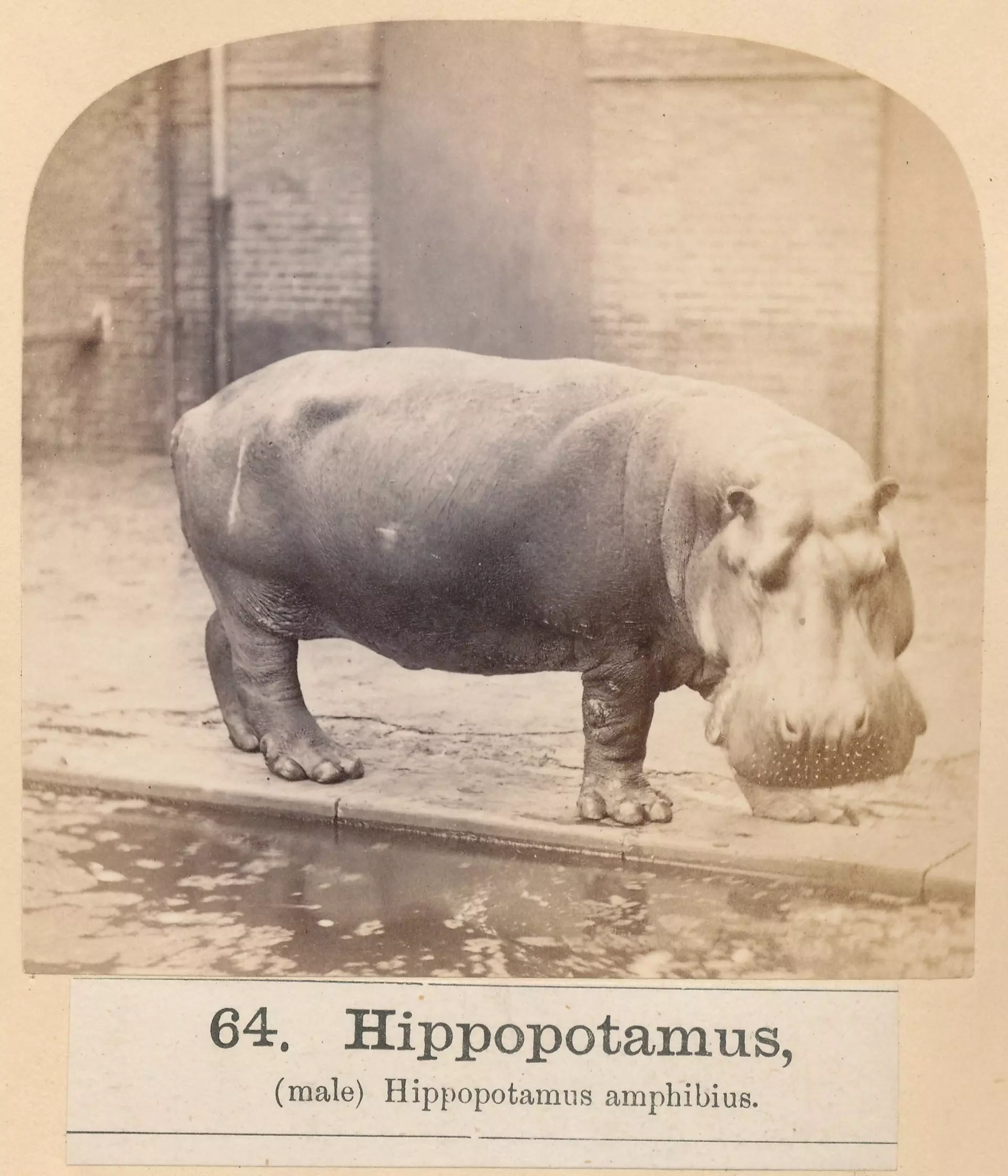Obaysch was captured near an island in the Nile from which he took his name. After wintering in Cairo, where it is said he occasioned a noticeable shortage of milk, he arrived in London on 25 May 1850, thus becoming the first hippo to reach Europe’s shores since the days of the Roman Empire.
Despite lacking the engaging appearance and nature normally associated with Zoo stars, he quickly became the rage of London. Queen Victoria inspected him shortly after his arrival and, somewhat strangely, compared his swimming to that of a porpoise.
In 1854, a female, Adhela, joined him and it was hoped that they might breed. She, in common with many female hippos, was the dominant partner of the pair.
Obaysch, however cowed he may have been by his mate, was very ferocious with human beings. In 1860 he escaped from the hippo enclosure. The solution adopted by the newly appointed Superintendent, Abraham Dee Bartlett, was simple. He induced a keeper the hippo particularly hated to show himself to Obaysch and then run back into the enclosure and up a ladder out of harm’s way. The hippo followed him in the gate was slammed behind him.
In 1871, Obaysch fathered London Zoo’s first baby hippo. It did not survive. But in 1872, two more were born and the second of these, named Guy Fawkes because of its birthday (although subsequently discovered to be a female), became the first captive-bred hippo to be reared by its mother. Obaysch died in 1878, while his hardly less popular daughter survived until 1908.
The photograph of Obaysch was taken by Frederick York in the 1870's.
Today there are an estimated 125,000 to 150,000 hippos remaining throughout Sub-Saharan Africa, of which Zambia (40,000) and Tanzania (20,000-30,000) have the largest populations. They are still threatened by poaching for their meat and ivory canine teeth, and by habitat loss.
